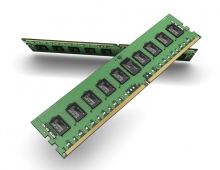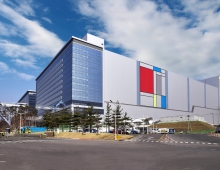
ASML To Deliver At Least 15 EUV Lithography Systems To U.S. Chip Maker
ASML will sell a minimum of 15 of its next-generation machines to a single U.S. customer, which is likely Intel. ASML said it signed an agreement with "one of its major US customers" to deliver a minimum of 15 ASML EUV lithography systems to support increased development activity and pilot production of future-generation manufacturing processes.
"The customer intends to use EUV lithography for multiple processing steps in future process technology nodes," ASML added.
Intel declined to comment.
The Dutch company expects the delivery of the first two NXE:3350B EUV systems to occur before the end of 2015, and added that the new systems would be in addition to the existing EUV development systems already "at the customer." Financial terms were not disclosed, although the a deal could be worth more than $1 billion.
The world's largest chip makers all use ASML's machines, but Intel and Taiwan Semiconductor (TSMC) are pushing hardest to integrate the new machines into their manufacturing process. TSMC has said it expects to have a machine in full-scale commercial use by the end of next year.
Intel holds 14.37 percent of ASML, while TSMC and Samsung Electronics have smaller stakes.
Separately, ASML said last week it expected to ship six EUV systems this year. TSMC has confirmed it will take two. Now that Intel is expected also to take two, it could be interesting to see whether Apple's major chip supplier Samsung will be purchasing the final pair.
Extreme Ultraviolet (EUV) lithography is a new patterning technology that simplifies the manufacturing process for the most advanced chips with benefits in terms of yield and cycle time. It is expected to help the semiconductor industry to continue Moore's Law well into the next decade by packing more transistors on a chip, reducing cost-per-function and improving energy efficiency.
Lithography is an optical technology that is used to image the circuits on a chip. One of the key factors that determine the resolution that can be achieved with lithography is the wavelength of the light. Extreme Ultraviolet (EUV) Lithography uses light of a shorter wavelength (13.5 nanometers) than the current standard in volume production of the most advanced chips, immersion lithography (193 nanometers). EUV can thus image smaller features without the need for multiple exposures, and allows semiconductor device makers to simplify the manufacturing process, exposing a critical layer of a chip in a single step.



















